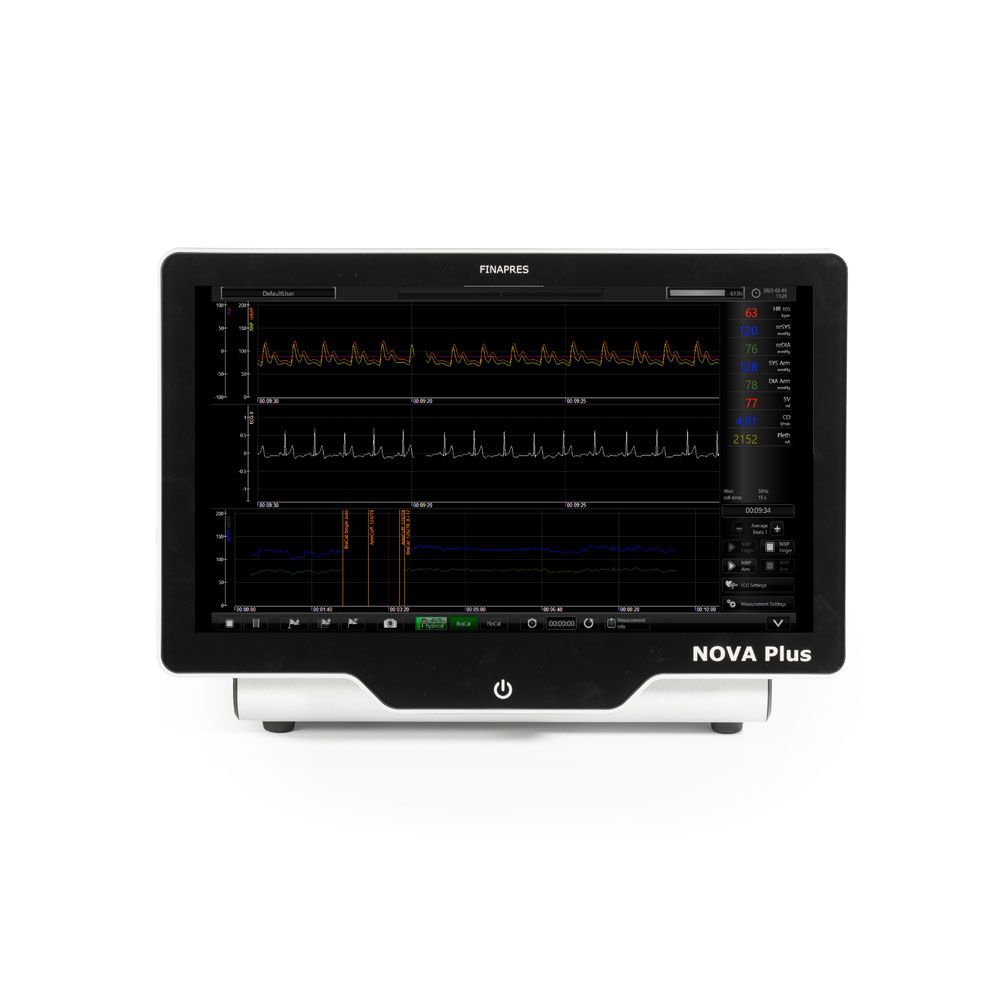5 Benefits of Continuous Non-Invasive Blood Pressure Monitoring
Date: 12th February 2021
Reading Time: 5 mins.

Understanding Blood Pressure: A Varying Parameter
In clinical practice, one of the most frequently measured parameters is the blood pressure [1]. Blood pressure (BP) is a cardiovascular parameter that often fluctuates, for example in response to posture changes, exercise, or stress. It also varies in different sites throughout the cardiovascular system. Factors like the properties of the blood vessel and the tone of the smooth muscle cells in the vessel wall, but also respiration and spontaneous fluctuations throughout the day can affect the BP waveform and level. This makes blood pressure a variable parameter that should be measured carefully [1].
Blood Pressure Measurement Techniques
The methods to measure blood pressure can be divided in two categories:
- Direct invasive methods
- Indirect non-invasive methods
1. Direct Invasive Blood Pressure Measurement Techniques
The direct invasive method requires invasion of the body with a hollow needle. The measurement system usually consists of a long, thin liquid-filled catheter, which can be positioned in the artery through the hollow needle. The catheter is connected to a pressure transducer outside the body at heart level [1].
Risks and disadvantages
Invasive methods provide insight into the actual blood pressure pattern, including its variability. Despite the fact that invasive blood pressure measurements could be regarded as the gold standard, its application is limited due to the invasiveness of the procedure, the associated risks and ethical aspects. Therefore, such measurements are only indicated for seriously ill patients [1].
2. Non-Invasive Blood Pressure Measurement techniques
Depending on the technique, indirect non-invasive measurements can provide either a momentary value of blood pressure or a continuous waveform. The latter provides similar information to the invasive measurements.
The three most commonly used techniques for non-invasive blood pressure measurement are:
- the auscultatory method (Riva-Rocci / Korotkoff) – provides a momentary BP value
- the oscillometric method (Marey) – provides a momentary BP value
- the volume-clamp method (Peňáz) – provides a continuous BP waveform
Volume-Clamp Method for continuous non-invasive blood pressure measurements
While the auscultatory and oscillometric method only provide momentary values of systolic and diastolic blood pressure, the volume-clamp method provides a continuous measure of blood pressure in the finger as well as the arterial blood pressure waveform. This method is based on the principle of dynamic unloading of the arteries in the finger. The diameter of the finger artery is gauged with a LED transmission plethysmograph mounted inside an inflatable cuff. If the size of the finger artery increases due to a blood pressure increase, the air pressure in the cuff also increases just enough to keep the arterial diameter constant: the volume-clamp method. This enables continuous non-invasive BP measurements [2]!
See how Finapres devices apply the volume-clamp method in this video:
5 Benefits of Continuous Non-Invasive Blood Pressure Monitoring [1, 2]
- It is an ethical method that can be applied in many situations, due to its non-invasiveness,
- It has fewer risks for the subject compared to the invasive method,
- It is very patient-friendly,
- It is painless,
- It is a very convenient method to support clinical diagnostics, research, and education purposes.
Learn more about Finapres solutions at www.finapres.com or get a Request for quote for more information! More questions? Do not hesitate to contact us!
References
- Langewouters, GJ, et al. “Why use Finapres or Portapres rather than intraarterial or intermittent non-invasive techniques of blood pressure measurement ?.” Journal of Medical Engineering & Technology 22.1 (1998): 37-43.
- Finucane, Ciarán, et al. “A practical guide to active stand testing and analysis using continuous beat-to-beat non-invasive blood pressure monitoring.” Clinical Autonomic Research (2019): 1-15.



